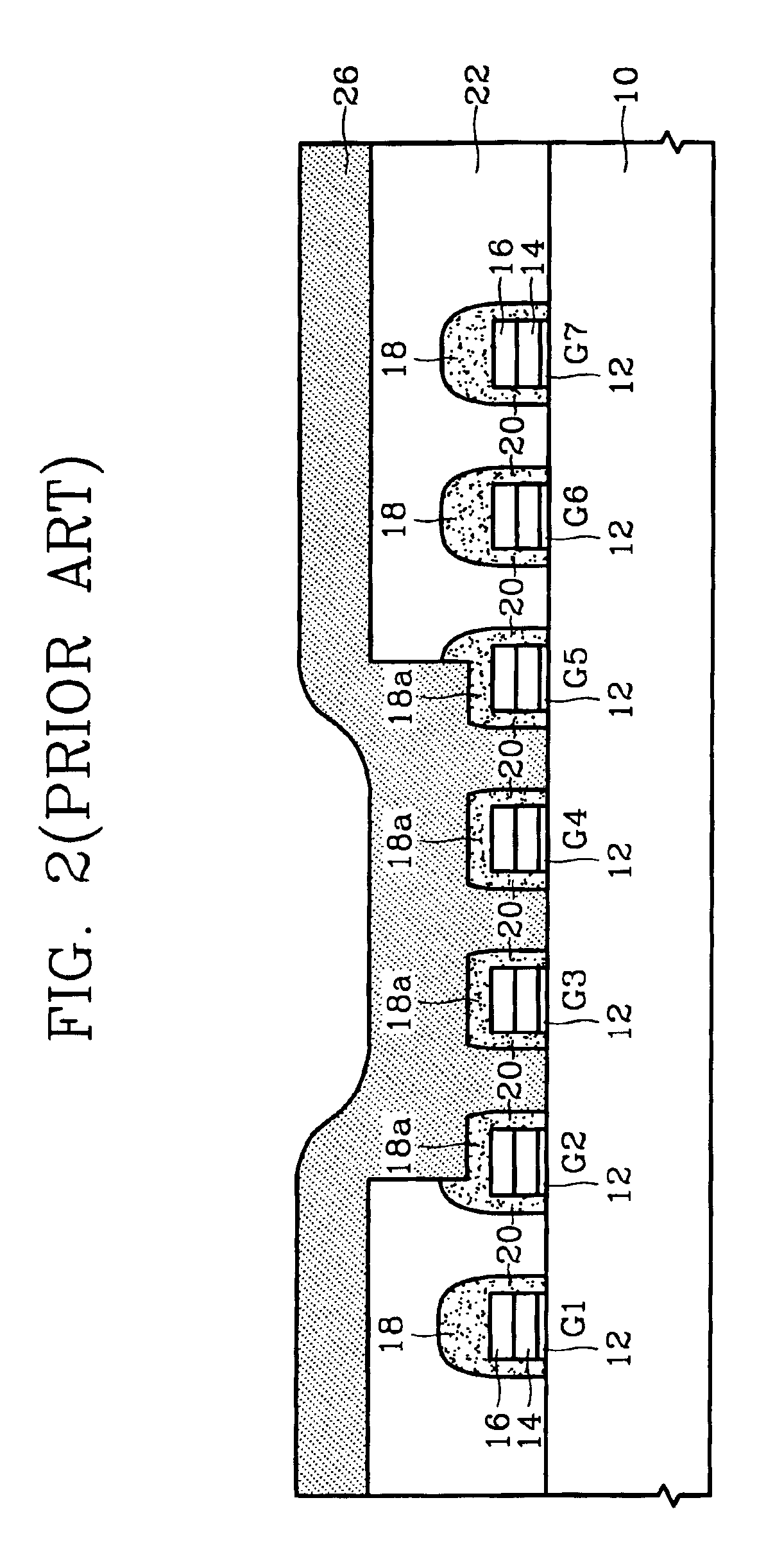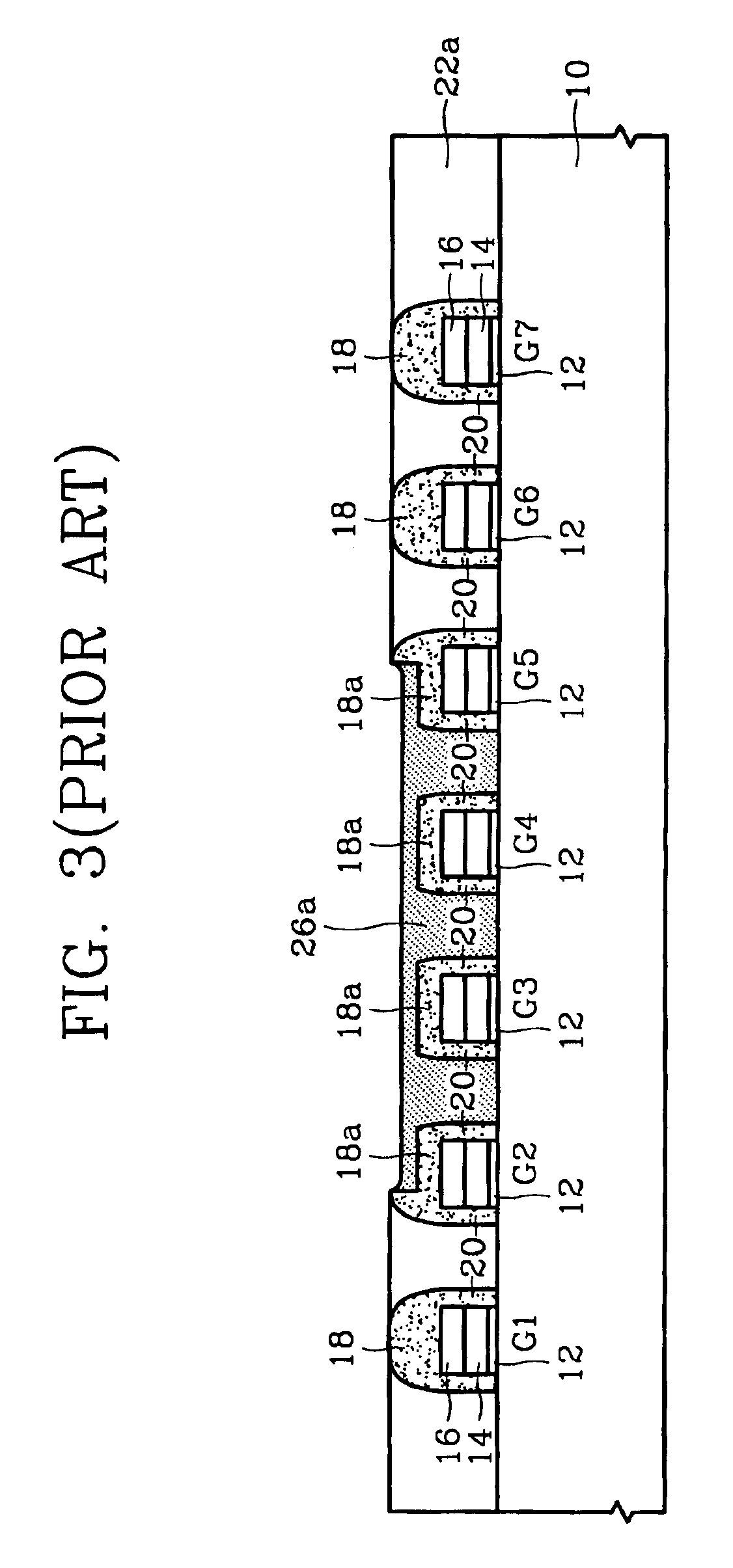Chemical mechanical polishing slurry
a technology of mechanical polishing and slurry, applied in the direction of lapping machines, polishing compositions, other chemical processes, etc., can solve the problems of high probability of gate electrode damage, uneven thickness of inter-silicon oxide layer, shortening unless corrected, etc., to and reduce the removal rate of oxide layer and nitride layer. , the effect of significant reduction
- Summary
- Abstract
- Description
- Claims
- Application Information
AI Technical Summary
Benefits of technology
Problems solved by technology
Method used
Image
Examples
example 1
In this example, the polishing slurry included the well known SS-25 base polishing slurry manufactured by the Cabot Co., which was diluted with deionized water at a ratio of 1:1. The downward force of a polishing head of a polisher manufactured by the Presi Co. was set at 5 psi, and the speed of the polishing table was set at 65 rpm. Then, the removal rate of Si3N4 and PE-TEOS with respect to changes in the amount of PEI was investigated. The results are shown in Table 2. Here, PE-TEOS is formed by PE-CVD, and Si3N4 is formed by LPCVD. The SS-25 includes an abrasive of fumed silica of 35 wt %, a pH controlling agent (pH=11) and deionized water as the main ingredients.
TABLE 2Removal Rate of Si3N4 and PE-TEOS as a Function of PEI AmountPE-TEOS removal ratePEI amount (wt %)(Å / mm)Si3N4 removal rate (Å / min) 0.0 wt %2778647 0.2 wt %2918611 0.5 wt %1523341.25 wt %6972
The wt % amount of PEI is relative to a mixture including the SS-25 slurry and PEI. As shown in Table 2, the removal rates o...
example 2
In this example, Table 3 investigates the situation where the removal rates of PE-TEOS and Si3N4 are determined with respect to a dilution amount of deionized water, where PEI is not added to the base slurry SS-25. Table 4 investigates the situation where the removal rates of PE-TEOS and Si3N4 are determined with respect to a dilution amount of deionized water, where PEI is added to the base slurry SS-25. As in Example 1, the Table 3 and 4 values were produced on an apparatus in which the downward force of the Presi polishing head was set at 5 psi, and the speed of the polishing table was set at 65 rpm.
The results of Table 3 were obtained using a first dilution ratio (polishing slurry SS-25: deionized water) of 1:1, a second dilution ratio of 1:3, and a third dilution ratio of 1:7. In these examples, the polishing slurry in the first case includes an abrasive in the amount of 12.5 wt %, in the second case it includes an abrasive in the amount of 6.25 wt %, and in the third case it i...
example 3
In this example, Table 5 investigates the situation of the removal rates of PE-TEOS and Si3N4 where PEI is added to the base slurry SS-25, and further including a choline derivative. As in Example 1, the Table 5 values were produced on an apparatus in which the downward force of the Presi polishing head was set at 5 psi, and the speed of the polishing table was set at 65 rpm.
TABLE 5Removal Rate of Si3N4 and PE-TEOS as a Function ofPEI and Choline Derivative AddedSS-25 +SS-25 +0.5 wt %PolishingSS-25 +1.3 wt %PEI + 1.3 wt %slurry type 0.5 wt % PEIcholine chloride choline chlorideLayer typePE-TEOSSi3N4PE-TEOSSi3N4PE-TEOSSi3N4Removal15233420552571914rate(Å / min)
First, by comparing Table 1 and Table 5, note that if a choline derivative (e.g., choline chloride) is added to general polishing slurry, for example SS-25, the removal rate of PE-TEOS (a silicon oxide layer), does not change very much from 2501 to 2055 Å / min. However, the removal rate of Si3N4 (a silicon nitride layer), is greatl...
PUM
| Property | Measurement | Unit |
|---|---|---|
| wt % | aaaaa | aaaaa |
| pH | aaaaa | aaaaa |
| molecular structure | aaaaa | aaaaa |
Abstract
Description
Claims
Application Information
 Login to View More
Login to View More - R&D
- Intellectual Property
- Life Sciences
- Materials
- Tech Scout
- Unparalleled Data Quality
- Higher Quality Content
- 60% Fewer Hallucinations
Browse by: Latest US Patents, China's latest patents, Technical Efficacy Thesaurus, Application Domain, Technology Topic, Popular Technical Reports.
© 2025 PatSnap. All rights reserved.Legal|Privacy policy|Modern Slavery Act Transparency Statement|Sitemap|About US| Contact US: help@patsnap.com



